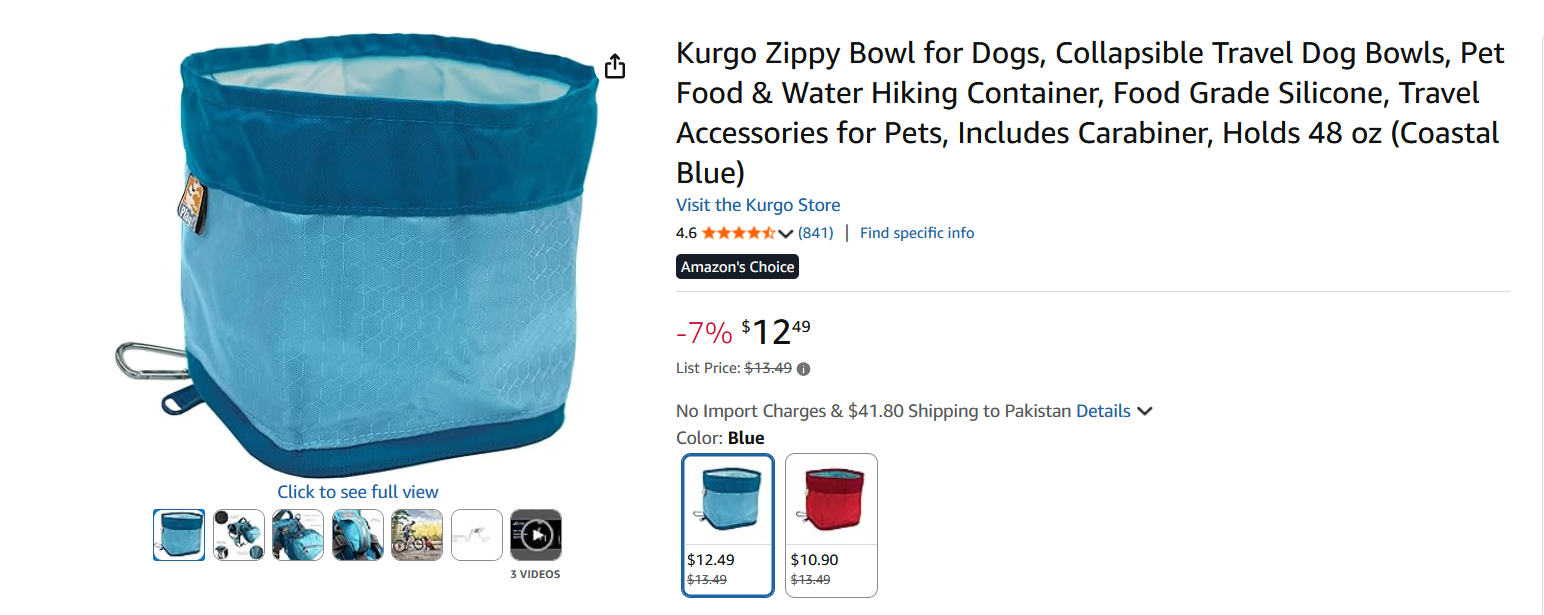Your dog pants hard at the park but won’t touch the bowl. Back home, he drains it in seconds. It looks stubborn, but it is a comfort and safety equation in your dog’s head.
Refusing water outdoors is common in confident and timid dogs alike. The surface, bowl scent, water temperature, crowding, and even the angle of the sun can make a dog hesitate.
Dehydration builds quietly, and by the time gums feel tacky and energy dips, you have already lost ground. The goal is to make outdoor drinking feel familiar and safe.
What is actually going on?
Dogs develop place-linked habits.
They learn that the kitchen bowl means clean, predictable water. Outside, a different bowl shape, metal taste, or strange smell raises questions.
Running kids, skateboards, or another dog hovering over the bowl adds pressure. Some dogs also guard resources in public and avoid drinking when others can approach.
Fix the environment first:
Bring your dog’s own collapsible bowl that smells like home.
Offer water in a calm spot away from foot traffic. Kneel beside your dog to create a small safe pocket. Face away from the water so you are not staring, which some dogs read as pressure.
Wait thirty seconds before moving; rushing teaches avoidance.
Temperature and taste:
Many dogs prefer cool but not icy water.
Extremely cold water can cause brief stomach tension in sensitive dogs. Fill a bottle at home so the initial taste is familiar. Top up later from a safe source.
If your area has heavily chlorinated taps, a simple carbon filter pitcher at home makes the baseline flavor consistent.
Training the “drink” cue at home:
Hand a small bowl, say “drink,” count to five, reward with calm praise, and put the bowl away.
Repeat daily for a week. Then practice in the yard, then just outside your building, then on a quiet street. Gradual distance builds confidence. The cue helps in hot weather and after play when arousal is high but drinking impulse is low.
Reading early dehydration:
Watch for longer recovery times after a sprint, gum stickiness, slower tail wag, and a dog that lies on cool surfaces sooner than usual.
If you lift the skin over the shoulder and it falls back slowly, you are already behind on fluids. Stop the game, find shade, and offer quiet sips.
One practical loadout:
Carry one small soft bowl and one bottle dedicated to your dog. Offer sips every fifteen minutes during warm walks and every ten minutes during fetch sessions.
Keep sessions short in direct sun and use shade breaks to offer water without competition.
Buy Kurgo Collapsible Dog Bowl on Amazon.
It holds shape, packs flat, and dogs accept the silicone scent after a quick rinse.
FAQs:
Why does my dog only drink at home?
Home smells and bowl shape signal safety and predictability. Outside feels uncertain until you teach that outdoor water is part of the same routine.
Is it okay to flavor water with broth?
Use a splash of low-sodium, onion-free broth only for training stages. Transition back to plain water once the habit forms.
How much should my dog drink on a hot walk?
Roughly 15–30 ml per kilogram per hour of moderate activity is a reasonable guide. Offer small, frequent sips rather than one big drink.
Should I worry about water bloat?
It is rare on walks with small, spaced sips. Avoid letting a dog gulp huge volumes after intense play. Slow down, rest, and offer multiple small drinks.
Subscribe to Parhley for practical, field-tested pet care that puts comfort and safety first.
Discover more from Parhley
Subscribe to get the latest posts sent to your email.




